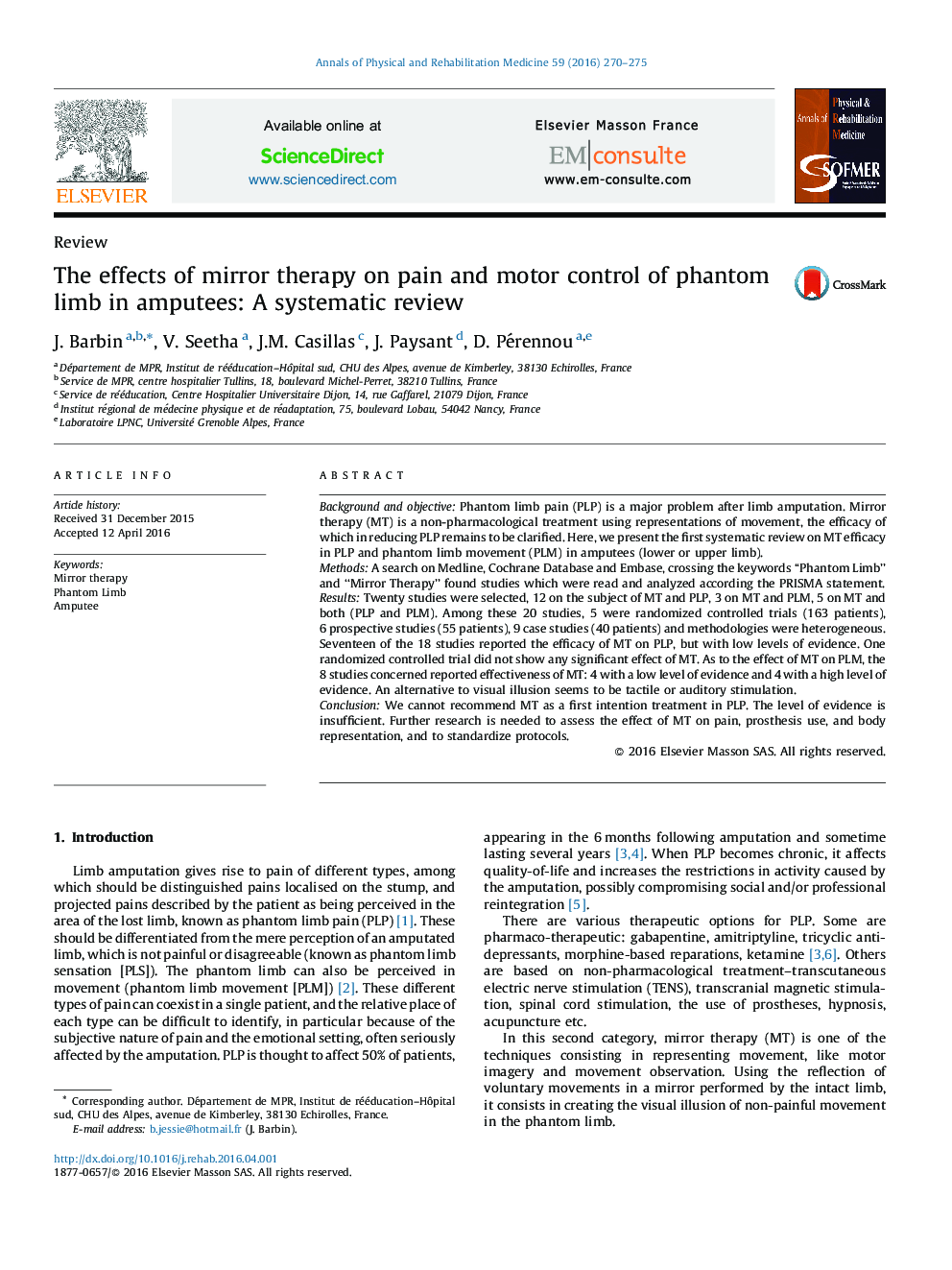| Article ID | Journal | Published Year | Pages | File Type |
|---|---|---|---|---|
| 5706043 | Annals of Physical and Rehabilitation Medicine | 2016 | 6 Pages |
Background and objectivePhantom limb pain (PLP) is a major problem after limb amputation. Mirror therapy (MT) is a non-pharmacological treatment using representations of movement, the efficacy of which in reducing PLP remains to be clarified. Here, we present the first systematic review on MT efficacy in PLP and phantom limb movement (PLM) in amputees (lower or upper limb).MethodsA search on Medline, Cochrane Database and Embase, crossing the keywords “Phantom Limb” and “Mirror Therapy” found studies which were read and analyzed according the PRISMA statement.ResultsTwenty studies were selected, 12 on the subject of MT and PLP, 3 on MT and PLM, 5 on MT and both (PLP and PLM). Among these 20 studies, 5 were randomized controlled trials (163 patients), 6 prospective studies (55 patients), 9 case studies (40 patients) and methodologies were heterogeneous. Seventeen of the 18 studies reported the efficacy of MT on PLP, but with low levels of evidence. One randomized controlled trial did not show any significant effect of MT. As to the effect of MT on PLM, the 8 studies concerned reported effectiveness of MT: 4 with a low level of evidence and 4 with a high level of evidence. An alternative to visual illusion seems to be tactile or auditory stimulation.ConclusionWe cannot recommend MT as a first intention treatment in PLP. The level of evidence is insufficient. Further research is needed to assess the effect of MT on pain, prosthesis use, and body representation, and to standardize protocols.
